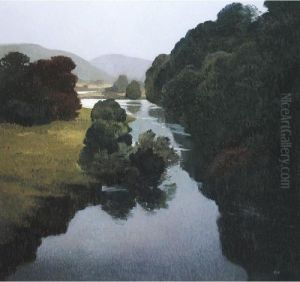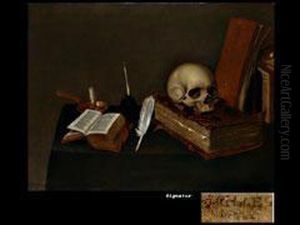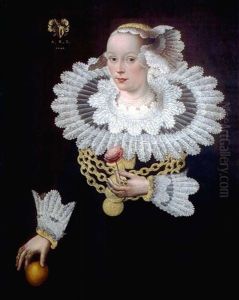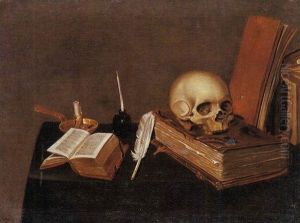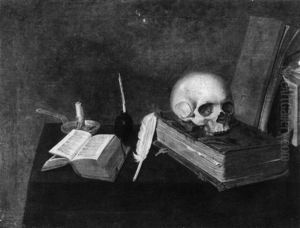Michael Conrad Hirt Paintings
Michael Conrad Hirt was a notable German Baroque painter, born in the year 1613 in Breslau, Silesia (now Wrocław, Poland). Hirt's artistic journey began in his hometown, but his reputation and influence extended beyond the borders of Silesia, making a significant impact on the Baroque art scene of the 17th century. His works, which primarily consisted of portraits and historical paintings, were celebrated for their detailed realism, vibrant colors, and the emotional depth they conveyed.
Hirt received his early education in Breslau, and his burgeoning talent was evident from a young age. Seeking to refine his skills and learn from the masters of his time, he traveled extensively across Europe, studying the works of prominent artists in Italy and the Netherlands. These experiences were instrumental in shaping his artistic style, which combined the grandeur of Italian Baroque with the meticulous detail characteristic of Dutch painting. Upon returning to his homeland, Hirt brought with him a wealth of knowledge and new techniques that would greatly influence his future works.
Throughout his career, Michael Conrad Hirt was commissioned by various nobles and religious institutions, which was a testament to his skill and the high regard in which he was held. His portraits, in particular, were highly sought after for their lifelike quality and the ability to capture not just the physical likeness of his subjects but their personality and essence as well. Hirt's historical paintings were equally acclaimed, often praised for their dynamic compositions and the vivid storytelling conveyed through each piece.
Despite his success, detailed records of Hirt's life and works are somewhat scarce, and many of his paintings have been lost or remain unidentified. Nonetheless, those that survive today are held in high esteem, housed in museums and private collections across Europe. Hirt's legacy lives on through these works, serving as a lasting testament to his skill and creativity.
Michael Conrad Hirt passed away in 1671, leaving behind a body of work that continues to be admired for its artistic excellence and historical significance. His contributions to the Baroque movement have not been forgotten, and he remains a celebrated figure in the world of art history, remembered for his ability to blend realism with the emotional and dramatic intensity characteristic of the Baroque era.
